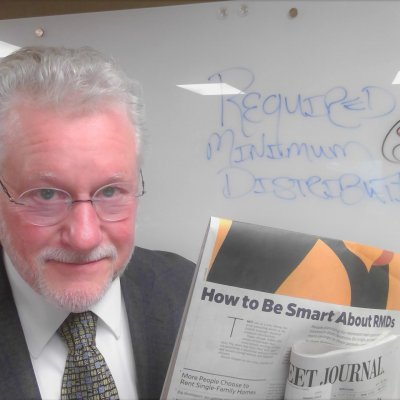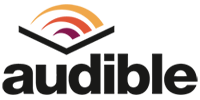You should find this fascinating because I know I find it fascinating: it's the reality of the Required Minimum Distribution. What is the Required Minimum Distribution (RMD)? These are the annual minimum amounts ($$) that must come out of certain types of retirement plans at a certain age, per the IRS. When it comes to retirement plans, there are two sides you’ve got to be thinking about. First, there are the distributions that you request before the government wants you to take the money out. Those are distributions that occur before age 59 ½. Typically, if you take money out before that age, you have to pay the taxes on whatever that distribution is from a traditional 401(k) or a traditional IRA along with an additional 10% tax penalty. Then, there’s also a back-end problem to consider as well. This used to happen at age 70 ½, but now it's age 72. They are talking about raising the age requirement again to age 75, but age 72 is currently when you are required to begin taking money out of your IRA plans or your 401(k) plan, a.k.a. traditional plans. If you don't, then you are going to be penalized not only the taxes that you should have paid, but there is again an additional penalty. It's not 10% like it would be before age 59 ½. The amount not withdrawn is taxed at 50% because the government wants what they deem as “their tax money”.
As I was reading the November 28, 2022 issue of The Wall Street Journal today, there was a whole section in their Wealth Management Section titled: How to be smart about RMDs. Here is problem #1: Why would you be waiting to spend your money in retirement? Shouldn't you be enjoying your money? You've spent your entire life accumulating your money. Here's the interesting thing: when I talk to people who are in their 20s, 30s, 40s, 50s, even sometimes in their 60s, they will say to me, “Mark, I will have no problem spending my money!” But something weird happens at retirement, all of the sudden those same people constrict. They become very, very tight with their assets. They are so fearful of running out of money because they don't have a strategy in place. They don't spend the money until they are required to by the government, and the unfortunate thing is when you do that, you ultimately end up dying with all this money left on the table, fully taxable in most instances. So, your family then gets to pay taxes and probably at a higher tax bracket because they will receive your money in their high-income earning years. You should have been taking that money out in your low-income years, which theoretically should have been in retirement.
I’m going to move on to page number two of the article. Now, this topic is something that people don't think about, but we have worked in this very area for literally decades, life insurance. Here's a strategy as described in The Wall Street Journal: “Life Insurance: this is a strategy that takes advantage of the fact that the proceeds from Life Insurance typically are free from income tax.” Also, if you put it together correctly, which is how we like to put it together, it should be totally income-tax free. So, in this strategy you would use your required minimum withdrawal from an IRA to purchase permanent life insurance such as a whole life insurance policy. Yes, you are taxed on the amount pulled from your nest egg, but you're going to be taxed anyway. It's not the insurance that's causing the taxation, it's the IRS policies in the plan that you’ve had in place for decades. So, yes, you’re taxed on the amounts pulled from your nest egg. It goes on to say that “the annual premiums can be steep.” Now wait, you're waiting until your age 70? Now, we do things like this and remember: you're still ahead of the game, but premiums can be steep, typically $20,000 or more to buy let’s say a million dollars’ worth of life insurance, which also argues for starting this process say in your early 60s or earlier so those premiums are not so steep.
I would go even further to say: Why would you not start this in your 30s, 40s, and 50s in order to have accessibility to the money as opposed to having it locked in your 401(k) or IRA until age 59 ½? Let’s add some flexibility to your lives people! As opposed to locking it up for the rest of time. So, start early. The earlier you buy: the larger your death benefit will be for the same premium. It goes on to say, “The long-term benefits of doing this though could be considerable. The assets inside the insurance policy grow tax-free.” The insurance can be left in a trust, though I think it should just be left in your name, but it can be put into a trust, “which would help you control the disbursement of the funds after your death.” That would be good in cases where you want money to be paid out at certain times, to certain individuals. The vast majority of people, though not everyone, typically will have an organization or a nonprofit group that they want to give the money to, or their children. If your children are responsible, just name them as the beneficiary then on your life insurance policy so they can receive the tax-free money automatically. That money will then be deposited into their checking account about 10 days after your death, income-tax free.
The article goes on to say, “There will be no RMDs with your life insurance and most importantly, no taxes. All of the above, presumes that you can in fact qualify for the insurance.” This is why you don't wait until you're 70s, and why you don’t wait until your 60s. You start putting a game plan in action immediately. One of the things when I work with CPAs that they are usually the most surprised about as I go through my own estate-planning processes with them, is that I began thinking about what my game plan was going to be when I was just in my late 20s and early 30s.
If you are in a retirement plan and you have not figured out what your deinvesting plan will be, instead you've spent 40 years investing and don't have a strategy to deinvest, and you’re wondering what is the best way, that is when you need to think about what the options are. That is when you should consider reading my book to learn the best strategies. That is when you should consider meeting with me and my team to talk about the strategies that are available to you that were also discussed in this article of The Wall Street Journal. Don’t wait until you can't qualify for some of the best, now nationally published, options available. For more information about me or my book explore our website.



